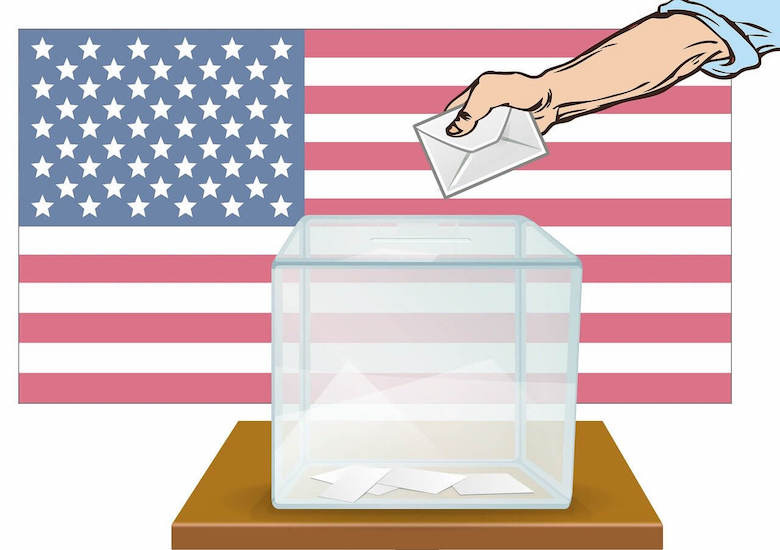Researching about the presumptive presidential nominee for the 2020 election
– Joe Biden, got me thinking about how the election process in US works? I was intrigued about its process, the mechanism and the various procedures
involved. Is it similar to a democratic set up like India where people elect their
own leader or does it follow a different method?
This article explains the exhaustive process in a simpler and easily decipherable
way.
To start with, not everyone can be the US President and the Vice President. The
U.S. Constitution’s Requirements for a Presidential Candidate are:
- A natural-born citizen of the United States.
- A resident of the United States for 14 years.
- At least 35 years old.
Also, another important thing to note is that the US President and Vice
President are not elected directly by the people. Instead, they are chosen by
electors through a process called the “Electoral College”.
To make it simpler, lets break the it down to 5 easy steps.
Step 1: Primaries and Caucuses
• There may be many people who want to be the president of USA. Each of
these people may have their own ideas about how the US government
should work. People with similar ideas usually align behind the same
political party. There are 2 main political parties – Democratic party and
Republican Party. After aligning before the desired party the candidates
will have to win the favour of their party members by campaigning
throughout the country.
• Primaries and caucuses are methods that political parties use to select
candidates for a general election. In primaries, the party members vote
for the best candidate that will represent them in the general election.
Whereas a caucus is a substitute for the primary meeting where
members of the political party gather in a city, town or county gather to
vote for their preferred party candidate and conduct other party
business.
Step 2: National Convention
• Once the primaries and caucuses are completed in each state, a national
convention is held in which a party’s nomination for president is formally
announced to the public. During the convention, the elected delegates
cast their vote for a party candidate and the candidate with the most
delegates gets the party’s nomination. The end of the convention marks
the beginning of the general election process.
Step 3: General Election Campaigning
• General election campaigning begins after a single nominee is chosen
from each political party, via primaries, caucuses, and national
conventions.
• These candidates travel the country, explaining their views and plans to
the general population and trying to win the support of potential voters.
Rallies, debates, and advertising are a big part of general election
campaigning.
Step 4: General Election (Popular Vote)
• This takes place usually in November.
• People in every state across the country vote for one president and one
vice president. This is regarded as the popular vote.
• The voters of each state, vote for electors to be the authorized
constitutional members in a presidential election. These voters form the
electoral college.
• An elector is a member of the electoral college. These electors, appointed
by the states, are pledged to support the presidential candidate the
voters have supported.
• To win the election, a candidate needs to secure more than half of total
538 electoral votes —-> 270
• Even though the majority of people of the USA vote for a candidate, that
does not mean that he/she will win the Presidential election. There are
instances where a candidate who won the popular vote lost the election,
for example the 2016 – US Election where Hillary Clinton won the popular
vote but still lost to Trump who managed to win more than 270 electoral
votes.
Step 5: Electoral College (Electors vote for the US President)
• This usually takes place in December.
• The US president is elected by the institution called the Electoral College.
• The intent of the framers was to filter public opinion through a body
composed of wiser, more experienced people and the framers did not
want the president to be chosen directly by the people.
• Each state gets a certain number of electors, based on each state’s total
number of representations in Congress.
• Each of the 50 US states and the capital Washington DC (a district which
does not belong to any state) have a set number of electors which
reflects their size.
• Aside from Maine and Nebraska, if a candidate gets the most votes within
a state, they receive that state’s full quota of electoral college votes.
• Each elector casts one electoral vote following the general election.
• There is a total of 538 electoral votes and the candidate who gets more
than half (270) wins the election.
Finally, the new president and vice president are then inaugurated in January.
Elections are pivotal to the quality of a country’s governance and can either
greatly advance or set back a country’s long-term democratic development.
But the US Presidential Elections have one small hitch – the electoral college.
The thought with which the electoral college was created by the founding
fathers of the US constitution no longer seems relevant. US, though democratic,
ignores the will of the people and gives too much power to swing states.
So, the bottom line is will the U.S. decide to eliminate the electoral college? It’s
hard to say. There’s a movement to encourage states to split their electors in
proportion to the percentage of the state vote that each candidate gets.
While that wouldn’t eliminate the electoral college, it would change the winner-take-
all nature of the system and the way candidates think about state campaigns.
Time will tell whether that reform – and others – come to pass.
Featured image courtesy – https://www.clearias.com

